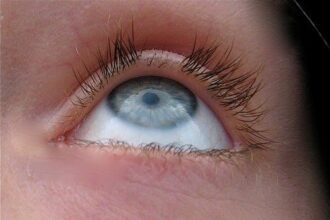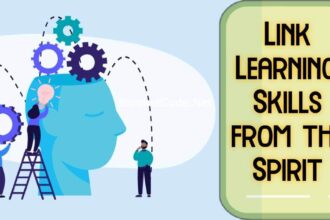In the quest to understand human biology and develop life-saving therapies, researchers have long relied on traditional methods like animal testing and cell cultures. While these approaches have yielded valuable insights, they often fall short of replicating the complex environment of the human body. This gap can lead to high failure rates in clinical trials, costing time, money, and, most importantly, lives.
New technologies are emerging to bridge this gap, offering more accurate and efficient ways to model human physiology and disease. These next-generation platforms are not just incremental improvements; they represent a fundamental shift in how we approach biomedical research and drug development. By providing a more faithful window into human biology, they promise to accelerate innovation, reduce reliance on animal models, and ultimately bring safer, more effective treatments to patients faster.
This post will explore some of the most promising platforms transforming the life sciences, from advanced in-vitro models to powerful in-silico tools. We’ll examine how these technologies work, their key applications, and the profound impact they are having on the future of medicine.
A Closer Look at Advanced In-Vitro Models
In-vitro models, which involve studying biological processes outside of a living organism, have been a cornerstone of research for decades. However, recent advancements have taken these models to a new level of sophistication, enabling scientists to simulate human tissues and organs with unprecedented accuracy.
3D Cell Cultures and Organoids
Traditional 2D cell cultures, where cells are grown in a flat layer on a plastic dish, have limitations. They don’t capture the three-dimensional structure and cell-to-cell interactions that occur within living tissues. To overcome this, scientists have developed 3D cell culture techniques that allow cells to grow into structures that more closely resemble their native environment.
One of the most exciting developments in this area is the creation of organoids. These are miniature, self-organizing 3D structures grown from stem cells that mimic the architecture and function of a specific organ, such as a mini-gut, mini-liver, or even a mini-brain. Researchers can use these organoids to:
- Study organ development and disease progression in a controlled setting.
- Test the effects of new drugs on specific human tissues.
- Explore personalized medicine by creating organoids from a patient’s own cells.
The Rise of Organ-on-a-Chip Technology
Taking this concept even further, organ-on-a-chip technology combines 3D cell cultures with microfluidics to create small devices that simulate the functions of human organs. These “chips,” typically the size of a USB stick, contain tiny channels lined with living human cells. By pumping fluids through these channels, researchers can mimic blood flow and expose the cells to drugs, nutrients, and toxins, just as they would be in the body.
This technology allows for the creation of multi-organ systems on a single chip, enabling scientists to study the complex interactions between different parts of the body. For example, they can see how a drug metabolized by the liver might affect the heart. This integrated approach provides a more holistic view of a drug’s potential effects before it ever reaches a human patient, leading to safer and more effective clinical trials.
The Power of In-Silico Modeling
Alongside advances in wet-lab models, computational or “in-silico” approaches are becoming indispensable tools in life science innovation. These technologies use computer simulations and artificial intelligence to model biological systems, analyze massive datasets, and predict outcomes.
AI and Machine Learning in Drug Discovery
Artificial intelligence (AI) and machine learning (ML) are revolutionizing nearly every stage of the drug development pipeline. Algorithms can now analyze vast biological and chemical datasets to:
- Identify new drug targets: AI can sift through genetic and proteomic data to pinpoint molecules involved in disease.
- Design novel drugs: ML models can predict how a potential drug molecule will interact with its target, allowing chemists to design more effective compounds from the start.
- Predict drug efficacy and toxicity: By learning from past experimental data, AI can forecast how a drug will behave in the body, reducing the risk of failure in later stages.
These computational tools dramatically accelerate the early phases of drug discovery, which have traditionally been slow and expensive.
Digital Twins and Systems Biology
The concept of a “digital twin”—a virtual replica of a physical object or system—is also making its way into the life sciences. Researchers are building complex computational models that represent everything from a single cell to an entire human body. These digital twins integrate data from various sources, including genomics, proteomics, and clinical data, to create a comprehensive simulation of a patient’s physiology.
These models are central to the field of systems biology, which aims to understand the complex web of interactions that govern biological systems. With a digital twin, researchers can:
- Simulate how a disease might progress in a specific individual.
- Test thousands of potential treatment strategies virtually to find the most promising options.
- Personalize medical interventions based on a patient’s unique biological makeup.
Charting a New Course for Medical Innovation
The convergence of advanced in-vitro and in-silico platforms is setting a new standard for biomedical research. By providing more accurate, human-relevant data, these technologies empower scientists to make more informed decisions, leading to faster discoveries and fewer dead ends. As these platforms continue to evolve and become more accessible, they will undoubtedly play a crucial role in tackling some of humanity’s most pressing health challenges.
The journey from a laboratory discovery to a life-changing treatment is long and complex, but these next-generation tools are helping to pave a smoother, more efficient path forward. By embracing these innovations, the life science community can accelerate the development of the medicines of tomorrow and improve the health and well-being of people around the world.

















